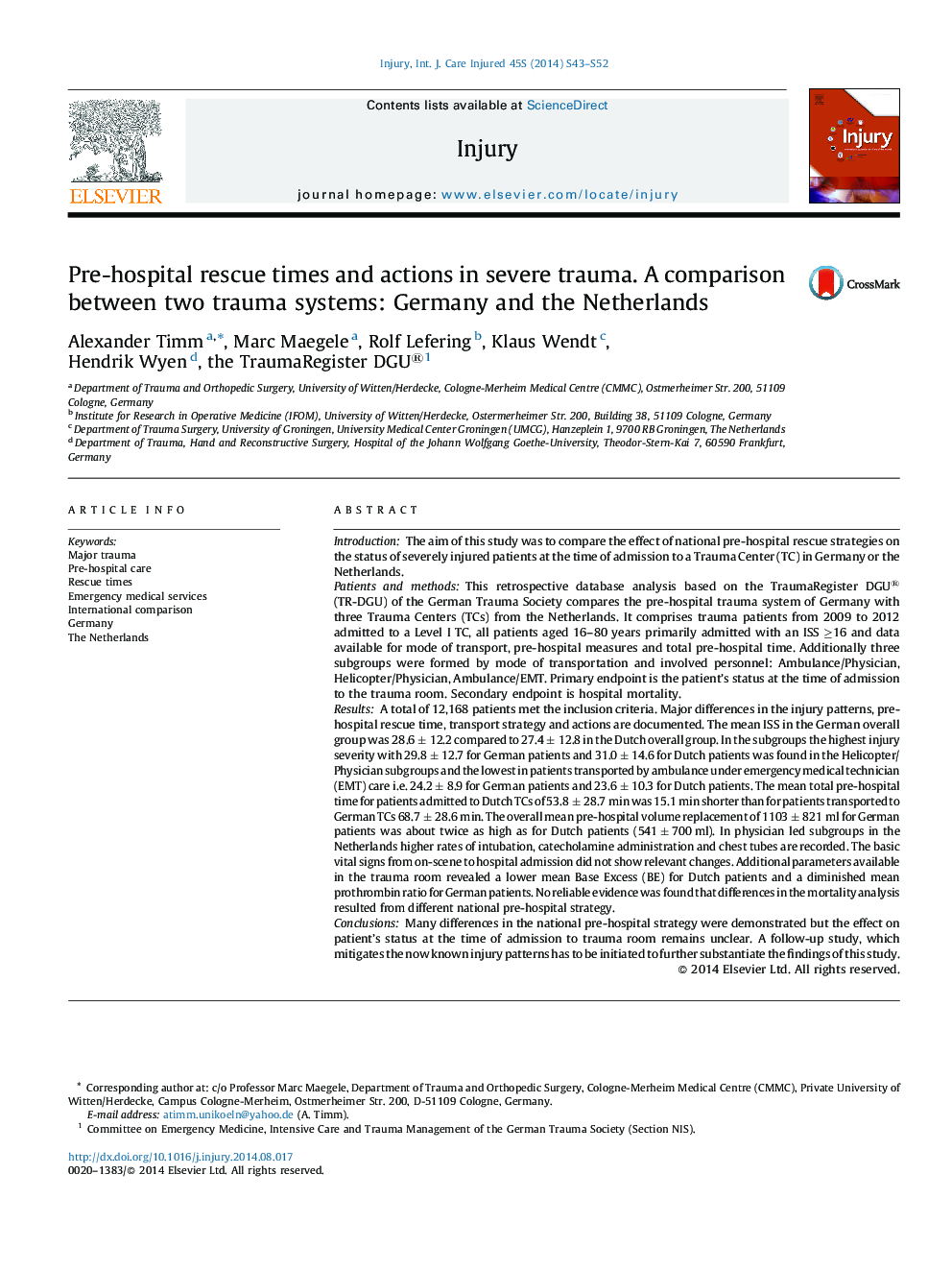| Article ID | Journal | Published Year | Pages | File Type |
|---|---|---|---|---|
| 3239904 | Injury | 2014 | 10 Pages |
IntroductionThe aim of this study was to compare the effect of national pre-hospital rescue strategies on the status of severely injured patients at the time of admission to a Trauma Center (TC) in Germany or the Netherlands.Patients and methodsThis retrospective database analysis based on the TraumaRegister DGU® (TR-DGU) of the German Trauma Society compares the pre-hospital trauma system of Germany with three Trauma Centers (TCs) from the Netherlands. It comprises trauma patients from 2009 to 2012 admitted to a Level I TC, all patients aged 16–80 years primarily admitted with an ISS ≥16 and data available for mode of transport, pre-hospital measures and total pre-hospital time. Additionally three subgroups were formed by mode of transportation and involved personnel: Ambulance/Physician, Helicopter/Physician, Ambulance/EMT. Primary endpoint is the patient's status at the time of admission to the trauma room. Secondary endpoint is hospital mortality.ResultsA total of 12,168 patients met the inclusion criteria. Major differences in the injury patterns, pre-hospital rescue time, transport strategy and actions are documented. The mean ISS in the German overall group was 28.6 ± 12.2 compared to 27.4 ± 12.8 in the Dutch overall group. In the subgroups the highest injury severity with 29.8 ± 12.7 for German patients and 31.0 ± 14.6 for Dutch patients was found in the Helicopter/Physician subgroups and the lowest in patients transported by ambulance under emergency medical technician (EMT) care i.e. 24.2 ± 8.9 for German patients and 23.6 ± 10.3 for Dutch patients. The mean total pre-hospital time for patients admitted to Dutch TCs of 53.8 ± 28.7 min was 15.1 min shorter than for patients transported to German TCs 68.7 ± 28.6 min. The overall mean pre-hospital volume replacement of 1103 ± 821 ml for German patients was about twice as high as for Dutch patients (541 ± 700 ml). In physician led subgroups in the Netherlands higher rates of intubation, catecholamine administration and chest tubes are recorded. The basic vital signs from on-scene to hospital admission did not show relevant changes. Additional parameters available in the trauma room revealed a lower mean Base Excess (BE) for Dutch patients and a diminished mean prothrombin ratio for German patients. No reliable evidence was found that differences in the mortality analysis resulted from different national pre-hospital strategy.ConclusionsMany differences in the national pre-hospital strategy were demonstrated but the effect on patient's status at the time of admission to trauma room remains unclear. A follow-up study, which mitigates the now known injury patterns has to be initiated to further substantiate the findings of this study.
